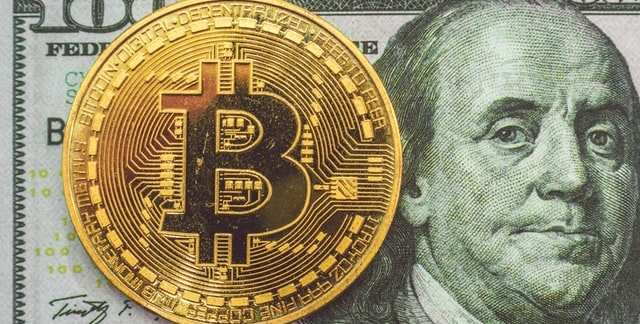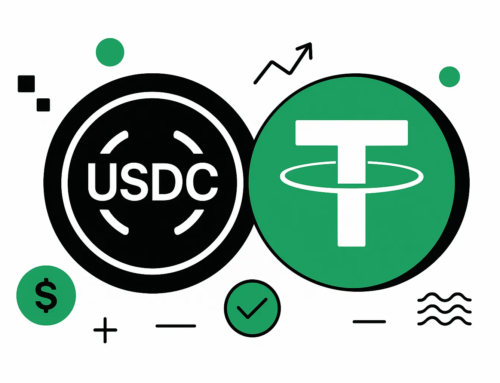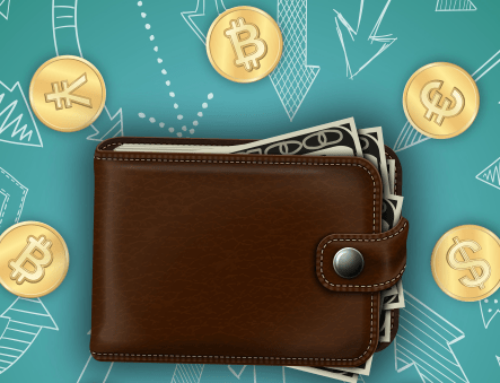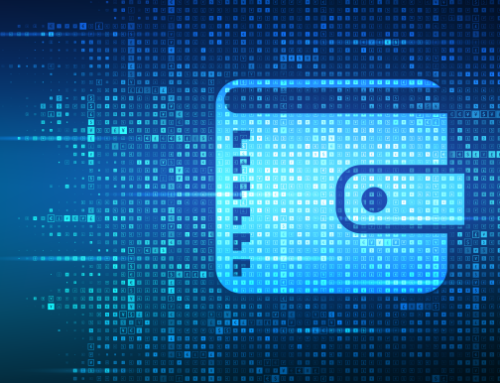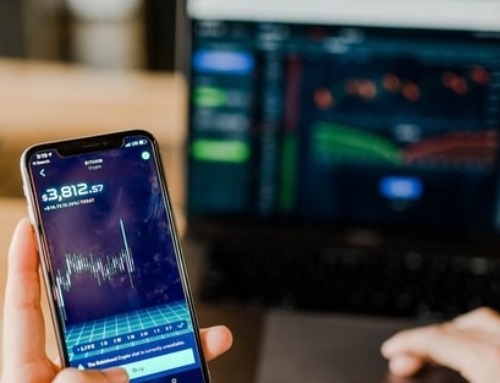Since the start of the 21st Century, the world has been leading it into digital supremacy. Multiple innovations have been organized and introduced at different levels, which led us to be witnessing a change in the financial dynamics. Digital currency and decentralization were a dream until Bitcoin was introduced as a digital solution to all financial discrepancies in 2008. From the day Bitcoin gained market recognition, the world has realized the greatness in the future that associates this contemporary solution to asset management. Cryptocurrency, as a department, has gained popularity across millions of users, eventually becoming a trillion-dollar market as of today.
Where Bitcoin had a positive recognition across millions of users, several governmental and significant authorities raised questions over the ideology of Bitcoin and cryptocurrency in its entirety. This is one of the primary reasons that led to high market volatility, which has its advantages and disadvantages for those who took the nerve to invest in the crypto space.
Where it all begun
Money is equivalent to a value that helps people buy commodities and assets equivalent to a specific value. Bitcoin turned out to provide a similar experience of value to the world’s people. However, while building up the users’ interest, Bitcoin had to set up a ‘trust’ amongst them. This trust model was heavily based on how Bitcoin operated in the market. Being an asset that is not backed up by any government primarily, is new, and is based on a worldwide group of users, this is not enough to set up the community’s trust. Unlike other trading systems such as commodities, gold, and paper money (or fiat money), cryptocurrency is quite different and diverse in its system.
The Bitcoin idea
Bitcoin is based on the system of decentralization, which particularly negates the complete current financial system of having centralized authorities controlling the financial system of the community. While understanding the basic concept of decentralization, it is necessary to recognize that the centralized world has mainly adopted banks as the authority that controls, regulates, and manages the transaction process. In contrast to centralization, Bitcoin introduced decentralization backed up by blockchain technology where any central authority does not restrict people. As the people were the owner of their assets, they were not bound to have their assets recognized by any authority while operating across Bitcoin or cryptocurrency, in general. This model was based on making the system of transactions efficient, manageable, and convenient in the sense of consumer psychology.
As Bitcoin pointed out the concept of decentralization as its staple form of operation, it also pointed out the solutions towards the conventional forms of digital transactions, which were observed across forex trading and other third-party associations. Building up a system across blockchain technology and under Proof-of-Work (PoW) operation mechanism, Bitcoin exempts all double-spending concerns across the platform. Setting up a strategy directed towards the benefit of the end-user, Bitcoin answered all of the security concerns and structural loopholes for the users. This potentially explains the basic ideology of Bitcoin into becoming a leading contender as a recognized financial asset on a worldwide platform.
To expand this explanation further, you can find below a large extract explained by 99bitcoins on their video “What is bitcoin?”
What is money exactly?
At its core, money represents value. If I do some work for you, you give me money in exchange for the value I gave you. I can then use that money to get something of value from someone else in the future.
Throughout history, value has taken many forms and people used a lot of different materials to represent money. Salt, wheat, shells and of course gold have all been used as a medium of exchange. However, in order for something to represent value people have to trust that it is indeed valuable and will stay valuable long enough for them to redeem that value in the future.
Up until a hundred years ago or so we always trusted in someTHING to represent money. However, something happened along the way and we’ve changed our trust model from trusting someTHING to trusting in someONE.
Over time, people found it too cumbersome to walk around the world carrying bars of gold or other forms of money, so paper money was invented.
Here’s how it worked: a bank or government would offer to take possession of your bar of gold; let’s say worth $1000, and in return, that bank would give you receipt certificates, which we call bills, amounting to $1000. Not only were these pieces of paper much easier to carry, but you could spend a dollar on a cup of coffee and not have to cut your gold bar into a thousand pieces. And if you wanted your gold back, you simply took $1000 in bills back to the bank to redeem them for the actual form of money, in this case that gold bar, whenever you needed… And so, paper began its use as money as an instrument of practicality and convenience. However as time progressed, and due to macroeconomic changes, this bond between the paper receipt and the gold it stands for was broken.
The gold standard
To explain the path that led us away from the gold standard is extremely complex, but suffice to say that governments told their people that the government itself would be liable for the value of that paper money. Basically we all said “let’s just forget about gold and trade paper instead”. So people continued to trade with receipts that are backed by nothing but the government’s promise.
Why did that continue to work? Well, because of trust. Even though there is no actual commodity backing paper money, people trusted the government and that’s how fiat money was created. Fiat is a Latin word that means “by decree”. Meaning the dollars, or euros or any other currency for that matter have value because the government orders it to. It’s what is known as “legal tender”: coins or banknotes that must be accepted if offered as payment. So the value of today’s money actually comes from a legal status given to it by a central authority, in this case, the government.
Changing the trust model
With the gold standard, the trust model changed, from trusting something to trusting someone, in this case, the government. Fiat money has two main drawbacks:
- It is centralized: You have a central authority that controls and issues it. In this case the government or central bank.
- it is not limited by quantity: The government or central bank can print as much as they want whenever needed and inflate the money supply on the market.
The problem with printing money is that because you’re flooding the market with more money the value of each dollar drops, so your own money is worth less. When you see prices rising throughout the years it’s not necessarily that prices are rising as much as that the purchasing power of your money is dropping. You need more dollars to buy something that used to “cost less”.
Once fiat money was in place, the move to digital money was pretty simple. We already have a central authority that issues money, so why not make money mostly digital and let that authority keep track of who owns what.
Today we mainly use credit cards, wire transfers, Paypal and others forms of digital money. The amount of physical money in the world is almost negligible and is getting smaller with each year that passes.
So if money today is digital, how does that even work? I mean, if I have a file that represents a dollar, what’s to stop me from copying it a million times and having a million dollars? This is called the “double spend problem”. The solution that banks use today is a “centralized” solution; they keep a ledger on their computer which keeps track of who owns what. Everyone has an account and this ledger keeps a tally for each account. We all trust the bank and the bank trusts their computer, and so the solution is centralized on this ledger in this computer.
There were many attempts to create alternative forms of digital currencies, however, none were successful in solving the double spend problem without a central authority. Whenever you give anyone control over the money supply you’re giving them enormous power and this creates three major issues:
- The first issue is corruption; power corrupts, and absolute power corrupts absolutely. When banks have a mandate to create money, or value, they basically control the flow of value in the world, which gives them almost unlimited power. A small example of how power corrupts can be seen in the Wells Fargo’s scandal where employees secretly created millions of unauthorized bank and credit card accounts in order to inflate the bank’s revenue stream, without their customers knowing about it for years.
- The second issue of a centralized system is mismanagement. If the central authority’s interest isn’t aligned with the people it controls there may be a case of mismanagement of the money. For example, printing a lot of money in order to save a certain bank or institution from collapsing, as what happened in 2008. The problem with printing too much money is that it causes inflation and basically erodes the value of the citizen’s money. One extreme example for this is Venezuela, where the government has printed so much money, and the value of it has dropped so much, that people are no longer counting money but are weighing it instead.
- The last issue is control. You are basically giving away all control of your money to the government or bank. At any point in time, the government can decide to freeze your account and deny you access to your funds. Even if you use only cold hard cash the government can cancel the legal status of your currency as was done in India a few years back. This was the state of things until 2009.
The change of money as we know it.
Creating an alternative to the current monetary system seemed like a lost cause. But then everything changed. In October 2008 a document was published online by a guy calling himself Satoshi Nakamoto. The document, also called a whitepaper, suggested a way of creating a system for a decentralized currency called Bitcoin.
This system claimed to create digital money that solves the double spend problem without the need for a central authority. At its core Bitcoin is a transparent ledger without a central authority, but what does this confusing phrase even really mean?
Let’s compare Bitcoin to the bank. Since most money today is already digital, the bank basically manages its own ledger of balances and transactions. However, the bank’s ledger is not transparent and it is stored on the bank’s main computer. You can’t sneak a peek into the bank’s ledger, and only the bank has complete control over it. Bitcoin is a transparent ledger. At any point in time, I can sneak a peek into the ledger and see all of the transactions and balances that are taking place. The only thing you can’t figure out is who owns these balances and who is behind each transaction.
Bitcoin is also decentralized; there’s no one computer that holds the ledger. With Bitcoin, every computer that participates in the system is also keeping a copy of the ledger, also known as the Blockchain. So if you want to take down the system or hack the ledger you’ll have to take down thousands of computers which are keeping a copy and constantly updating it.
Bitcoin opens up digital commerce to 2.5 billion people around the world who don’t have access to the current banking system. These people are unbanked or underbanked because of where they live and the reality that they have been born into. However, today, with a mobile phone and a click of a button they can start trading using Bitcoin, with no permission needed.
So what does all of this mean? Why is Bitcoin such big news?
For the first time since digital money came into existence, we now have an alternative to the current system. Bitcoin is a form of money that cannot be corrupted by anyone, no government or bank. Think about the time before the Internet, how centralized the flow of information was. Basically, if you wanted information you could get it from a few major players like the New York Times, The Washington Post and others like them. Today, thanks to the Internet, information is decentralized and you can communicate and consume knowledge from around the world with the click of a button.


